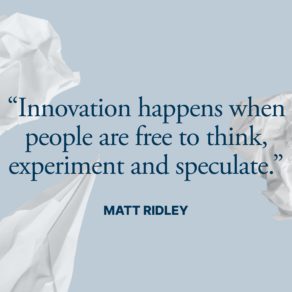Effective communication is a valuable tool that helps us connect with others, build meaningful relationships, and achieve success in both our professional and personal lives. As a leader or manager, having excellent communication skills – Understanding the ART of communication – is essential. Whether it’s delivering a presentation, communicating with your team, or just having a conversation with friends and family, your ability to communicate effectively can make all the difference.
So why is communication so important? Well, when we communicate well, we’re able to clearly convey our thoughts, ideas, and intentions to others. This helps us to build trust, establish mutual understanding, and ultimately, achieve our goals. Whether you’re in a professional or personal setting, being an effective communicator opens up a world of opportunities, allowing you to make an impact, inspire others, and create meaningful connections.
So, how can you master the art of communication? Well, it’s not about being perfect or having the gift of gab. Effective communication is about being present, paying attention, and making a conscious effort to understand the needs of others. It’s about being open, honest, and respectful, and having the ability to put yourself in someone else’s shoes.
“When people talk, listen completely. Most people never listen”
-Ernest Hemingway
The art of effective communication is more relevant than ever. Let us explore the importance of communication in the work environment as well as key communication tools for managers and leaders.
What are the benefits and importance of effective communication in personal and professional settings?
We all know that communication is a crucial aspect of our lives – be it in personal or professional settings. It’s the glue that binds us and helps us understand each other better. But have you ever wondered why communication is so important? Well, buckle up, because we’re about to take you on a journey to discover the many wonders of communication!
Making Connections
Communication is all about making connections. Whether it’s through words, gestures, or body language, it’s the human connection that makes all the difference. A simple “hello” or a smile can go a long way in building relationships and making someone feel valued.
Motivating Employees
In the workplace, communication plays a crucial role in motivating employees. When employees are kept in the loop about what’s happening, be it performance updates, goal-setting, or company changes, they feel more invested and motivated.
Accurate Information
Effective communication leads to accurate information dissemination. By establishing centralized communication systems, companies can ensure that everyone has access to the same information, leading to more consistency and accuracy.
Boosting Morale
Effective communication leads to higher morale among employees, leaders, and managers. By communicating goals, strategies, and objectives, employees can better understand what’s expected of them and how they can contribute to the success of the company. This, in turn, leads to improved motivation, performance, and a positive company culture.
Improving Teamwork
In companies with strong communication culture, employees are more likely to use the communication systems in place. This leads to improved teamwork, as employees can effectively communicate their plans, struggles, and needs.
Balancing Act
Finally, effective communication helps in creating a system of checks and balances. Leaders and managers can communicate their strategies, goals, and objectives, leading to better control over the process. The checks and balances help managers understand if employees are on the same page and if they need additional support.
What are the negative impacts of ineffective communication in the workplace?
The Miscommunication Mayhem
When the lines of communication are blurry, employees are left scratching their heads trying to figure out which source of information to trust. This leads to uncertainty and confusion, causing employees to feel frustrated and lost.
The Conflict Conundrum
This uncertainty can also spark conflict, as employees may not know who to trust or what information to rely on. This creates a toxic work environment where people are more likely to argue and mistrust each other.
The Teamwork Tragedy
Effective communication is key to successful teamwork. When employees can’t communicate effectively, they become less likely to collaborate and work as a team. Some employees may become protective of information, leading to a lack of information-sharing and overall, a decrease in the team’s performance.
The Gossip Galore
Gossip and rumors can flourish in the absence of clear communication. Employees may feel the need to fill in the gaps with their own opinions, leading to speculation and mistrust. This could cause the team to turn on each other, damaging the overall dynamic and trust within the group.
In conclusion, ineffective communication can cause a host of problems and create a negative work environment. It’s crucial for companies to establish clear and effective communication channels to avoid these issues and promote a positive and productive workplace.
What are some tips for better communication?
Timing is Everything:
Timing is key when it comes to communication. It’s important to choose the right moment to raise an issue or have a conversation. For instance, pulling an employee aside for a private chat might be more appropriate than addressing them publicly.
The Power of Face-to-Face:
There’s no substitute for face-to-face communication. It allows you to read the other person’s body language and gauge their reaction to what you’re saying. Plus, it helps build trust and fosters better relationships.
Avoid Being Attack-Minded:
Being aggressive or confrontational won’t get you very far in communication. It’s important to be honest but also tactful, so the other person doesn’t feel defensive or shut down.
Nonverbal Matters Too:
Your body language can make or break a conversation. So, it’s crucial to be mindful of your posture and gestures. For example, crossing your arms or turning away from the person can give a negative impression and damage the relationship.
What are the different types of workplace communication and how can they be improved?
Verbal Communication:
Verbal communication is the exchange of messages through speaking, whether it’s in a one-on-one meeting, with co-workers, or delivering a presentation. Words, tone of voice, and confidence are important factors in verbal communication. To improve, focus on conveying a clear and concise message, avoid filler words like “uhm” or “yeah,” and ask for feedback. Remember, meetings should be productive, so keep them concise and engaging.
Nonverbal Communication:
Nonverbal communication is the art of communicating without words. This includes facial expressions, body language, posture, and eye contact. To improve, be aware of your own body language, understand the culture of your workplace, and read the room to see how others are perceiving you. Try to mimic their behavior and make adjustments to ensure comfort for both parties.
Written Communication:
Written communication involves written words, such as emails, memos, and reports. To improve, focus on clear and concise language, proofread for grammar and clarity, and ask for a second opinion. Utilize writing tools and apps to improve your grammar and tone.
Visual Communication:
Visual communication is the presentation of information through visuals, such as charts, images, and presentations. To improve, keep it simple and to the point, use colors that align with the message, and consider taking a course in visual communication to develop your skills.
Auditory Communication:
Auditory communication is all about listening. Active listening is crucial for effective communication, and it involves paying attention, avoiding distractions, and giving the speaker time and space to express themselves. To improve, adopt an open mindset, practice active listening, and take courses or read up on the subject. As Christopher Morley said, “There is only one rule for being a good talker – learn to listen.”
What is the importance of active listening and how to approach it in interactions?
Have you ever heard the saying, “You have two ears and one mouth, use them proportionately”? Well, it’s time to put that into practice! Every interaction is an opportunity to learn and grow, so why not approach it with that mindset? When you see every person as a potential teacher, you can learn to control your emotions, even when you don’t necessarily like the person.
The key to active listening is to listen more and speak less. Don’t interrupt and give everyone a fair chance to express themselves. This not only shows respect but also helps you better understand their perspective.
Guiding a conversation can be as simple as asking open-ended questions. This way, you’re in control of the conversation while still being an attentive listener. This technique is especially useful in professional settings.
Want to make sure you don’t miss a beat? Ask direct, specific questions to get the details. For example, “Can you tell me more about that?” or “Why did the company choose this approach?” These types of questions will help you retain information better.
To ensure that you’ve understood what the other person is saying, summarize the conversation and ask clarifying questions. For example, “So, if I understand you correctly, it involves…” This not only confirms your understanding but also strengthens your relationship with the person.
Sometimes, the speaker may have difficulty expressing themselves. In these cases, you can show your encouragement by nodding, smiling, and being patient. This creates a comfortable environment for them to open up.
Active listening is about more than just hearing words. Pay attention to body language, facial expressions, and emotions to get a complete understanding of what the other person is trying to communicate.
Last but not least, when it’s your turn to respond, make sure you do so with respect. Take your time to listen, understand, and then respond accordingly. Remember, the better you listen, the more meaningful your response will be.
What are the different types of communication models and what impact do they have on a company’s communication efforts?
Linear model: A One-Way Street
Picture this – a sender, who’s sending out a message, and a receiver, who’s just waiting to receive it. That’s what we call a linear model of communication. This is often seen in mass emails, where there’s no room for feedback or interaction.
It’s a top-down approach, where the management team has a clear vision and communicates it to the entire company, who then receives the same information with instructions to follow. While it’s an efficient way to disseminate information, it can also be limiting. With no room for feedback, there’s little room for improvement or innovation.
Transactional Model: A Two-Way Street
On the other hand, we have the transactional model, which is an interactive way of communication. This involves a sender and a receiver, who can switch roles as needed. No tiers or levels involved, both parties can send and receive messages, with instant feedback.
However, the downside of this model is that it can get time-consuming if there’s too much feedback. It’s easy for people to get sidetracked from the main communication and focus more on giving feedback.
Interactional Model: The Slow and Steady Way
And finally, we have the interactional model, which is a slower feedback system. It involves multiple rounds of communication between the sender and the receiver, making it a great option for big companies with experienced professionals.
This model creates a long-term communication system, but feedback can take a while. The feedback can also be anonymous, depending on the company’s policies. In big companies, the sender and receiver may not even know each other, which can result in a lack of personal touch in communication.
Fun Fact: Communication Matters
According to a survey, 57% of employees report not receiving clear directions, while 69% of managers feel uncomfortable communicating with employees in general. These stats highlight the need for companies to focus more on effective communication. Whether it’s the linear, transactional, or interactional model, choosing the right approach can make all the difference in the success of a company’s communication efforts.
What are the top communication tools and software available for businesses?
With the advent of technology, the way we communicate in the workplace has undergone a significant transformation. Gone are the days of snail mail, pagers, and even traditional email. Today, communication in the workplace is all about instant gratification, streamlined processes, and enhanced collaboration.
Here’s a look at some of the top communication tools and software available for businesses of all sizes:
Workplace by Facebook:
This robust team communication software is designed to enhance and streamline communication between team members, making it an ideal choice for businesses looking to improve their internal communication. Workplace by Facebook offers a range of features, including group chat, voice and video calls, and file sharing, all in one central hub.
Fleep:
With its user-friendly interface and powerful features, Fleep is a standout player in the field of communication tools. This software offers a messaging platform similar to Skype or Facebook Messenger, allowing you to communicate with other Fleep users or teams. Additionally, Fleep also comes with a native task management feature, making it a rare find among communication tools. Ideal for businesses looking for a digital workspace solution.
Flock:
Flock is another excellent option for businesses looking for a robust communication app. This app stands out thanks to its centralized chat module, designed to streamline communication from different groups and across teams. Whether you’re looking to manage tasks, schedule meetings, or simply chat with colleagues, Flock has you covered.
A corporate communication strategy framework is an essential tool for businesses looking to plan and organize their communication efforts with employees, customers, suppliers, and investors. With a solid framework in place, businesses can ensure that their communication is consistent, effective, and targeted.
In conclusion, communication is the cornerstone of a successful business, and investing in the right tools can make all the difference. Whether you’re looking for a team communication app, a messaging platform, or a framework for your corporate communication strategy, there are plenty of options available to choose from. So why not take advantage of the technology available and make your workplace communication effortless?
What is a communication strategy framework and what are its key components?
If you’re looking to take your workplace communication to the next level, you’re in luck! A communication strategy framework can help you plan and execute a comprehensive approach to communicating with your employees, customers, suppliers, and investors. Let’s take a look at the key components of a communication strategy framework:
Knowledge and Skills Emphasis:
This component focuses on building the foundation of effective communication within your organization. By emphasizing competency models, hiring processes, orientation programs, training and development, feedback and coaching, and talent planning, you can help your employees grow and develop their communication skills.
Measures:
To assess the success of your communication efforts, it’s important to have a set of metrics in place. This component of the framework includes performance management, 360-degree feedback, employee surveys, and performance metrics and benchmarks.
Rewards:
Encouraging good communication practices within your organization is key, and a rewards program can be a great way to do so. Consider implementing compensation plans, benefits, recognition programs, and promotions to recognize and reward employees for their efforts.
Communication:
Effective communication is the cornerstone of a successful communication strategy. This component of the framework includes communication plans, print and electronic media, and face-to-face communication, to ensure that your messages are clear, consistent, and well-received by all.
Leadership:
Leadership plays a critical role in setting the tone for effective communication within your organization. This component of the framework includes vision and strategy, agenda items, questions, praise, resources, assignments, and symbolic behavior, to help leaders lead by example.
Structure and Process:
The final component of the communication strategy framework is all about structure and process. This includes organization structure, career paths, policies and procedures, roles and responsibilities, and tools and support, to ensure that your communication efforts are well-organized and well-supported.
In conclusion, a communication strategy framework is a powerful tool for businesses looking to take their communication efforts to the next level. By focusing on the key components of knowledge and skills, measures, rewards, communication, leadership, and structure and process, you can create a comprehensive, effective, and enjoyable communication experience for your employees, customers, suppliers, and investors!
What are some tips for making effective and memorable presentations?
Presenting information effectively is a crucial skill for both personal and professional success. Whether you’re making a presentation in front of a small group or a large audience, it’s important to put your best foot forward and make a great first impression. Here are some tips on how to make the most of your presentation:
Timeliness: Arriving early is always better than being late. This shows your respect for the audience and gives you a chance to get settled before the presentation starts.
Appearance: Dressing well and grooming appropriately can go a long way in making a good first impression. Take the time to pick out an outfit that matches the tone of your presentation and is appropriate for the audience.
Preparation: Do your research and practice your presentation so that you’re well-prepared. This will give you the confidence you need to deliver your message effectively.
Non-verbal communication: Pay attention to your body language and make sure it aligns with the message you’re trying to convey. A confident posture and friendly smile can make a huge impact on your audience.
Plan your presentation: Make sure you have a clear idea of what you want to present and how you want to present it. This includes creating an impactful intro and outro, using visual aids effectively, and pacing yourself so that the audience stays engaged.
Attend other presentations: Watch how other presenters approach their presentations. This can give you new ideas and help you see what works and what doesn’t.
Connect emotionally: Try to connect with your audience by using personal stories, quotes, or other emotional hooks. This will help engage the audience and keep their attention throughout the presentation.
Use pauses: Take a moment to pause after a long statement to give the audience time to process what you’ve said. This also gives you a chance to catch your breath and regroup.
Ask leading questions: Engage your audience by asking open-ended questions or asking for their feedback. This will help keep the audience invested in your presentation and make them more likely to listen.
Use color effectively: Color can have a big impact on the mood of your presentation. Consider the connotations of different colors, such as blue for tranquility, green for nature, and red for passion, and choose colors that match the tone of your presentation.
In conclusion, there are many ways to improve your presentation skills and make the most of your presentations. By following these tips, you’ll be well on your way to delivering effective and memorable presentations that engage and impress your audience.
What are the top tips for effective public speaking?
• Know Your Audience
Before you step on the stage, it’s crucial to understand who you’re speaking to. Research your audience to determine their backgrounds, interests, and expectations. This information will help you tailor your presentation and language to effectively connect with them. For example, if you’re presenting to executives, you’ll want to focus on facts and data, while a customer-facing presentation might require a more engaging and relatable approach.
• Practice Makes Perfect
Spend ample time familiarizing yourself with your presentation. Get to know each slide, understand the message you want to convey, and make necessary edits. This level of preparation will give you the confidence you need to deliver your presentation smoothly and effectively.
• Seek Feedback
Don’t be afraid to ask for feedback, both before and after your presentation. Take the time to review any suggestions and use them to improve your future presentations. Your goal should be to continually learn and grow as a speaker.
• Ditch the Script
While it’s essential to be prepared, avoid reading your slides or notes verbatim. Your focus should be on engaging with your audience and making eye contact. If needed, you can glance at your notes, but your aim should be to speak from memory and create a genuine connection with your listeners.
• Grab Their Attention
Make a lasting impression by starting and ending your presentation with a bang. Use attention-grabbing techniques like videos, statistics, or powerful quotes to make a statement and drive your message home.






Leave a Comment